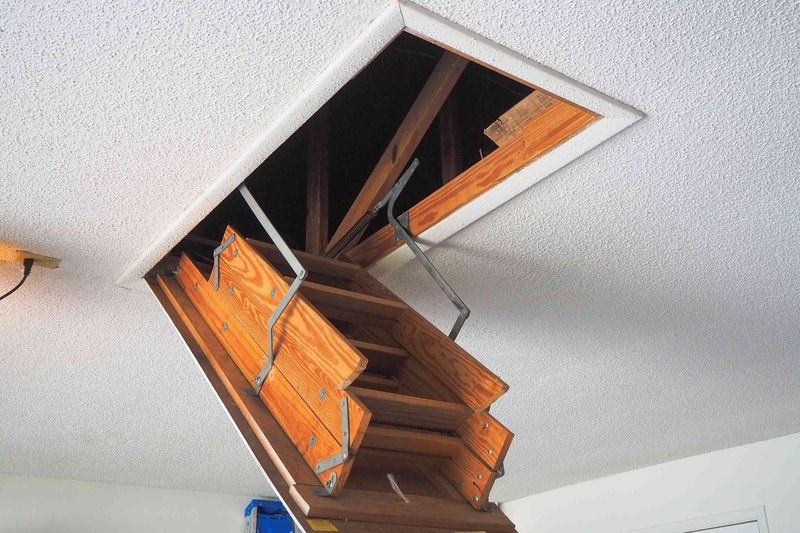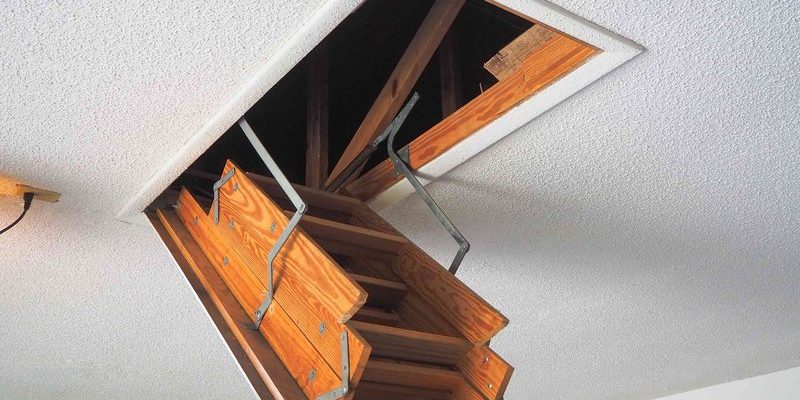
It’s a bit like fixing a friend’s old bicycle—you want to help them get it back on the road without taking a trip to the bike shop. Whether you have a simple access panel or a more complex motorized system from a brand like LiftMaster, there are common issues you might run into. Here’s what you need to know about troubleshooting those hardware problems effectively.
Identifying Common Hardware Issues
Understanding what’s wrong with your attic access door starts with recognizing the symptoms. Common issues include:
- The door won’t open or close properly.
- The latch is stuck or won’t catch.
- Hinges are squeaky or broken.
- Automatic controls aren’t responding.
If the door feels heavy or doesn’t budge, it could be an issue with the springs or hinges. Alternatively, if you hear an annoying squeak every time you use the door, it might just need some lubrication. Here’s the thing: diagnosing the problem early can save you time and trouble later.
You might also want to check for visible damage—like rust on the hinges or obstructions that could prevent the door from closing. If you notice any debris around the door frame, clear it out. Sometimes, it’s the little things that prevent smooth operation.
Checking the Latch Mechanism
The latch system on your attic access door plays a crucial role in keeping it secure. If it’s not functioning correctly, the door won’t close tightly, which can lead to drafts or pests finding their way into your attic.
Start by inspecting the latch for signs of wear and tear. If it feels loose or doesn’t catch properly, you may need to tighten screws or even replace the entire latch. It’s one of those situations where you might ask yourself, “Could I just live with it?” but trust me, a good latch makes a world of difference.
Here’s how to troubleshoot:
1. Inspect the Latch: Look for any visible damage or misalignment.
2. Tighten Screws: Use a screwdriver to tighten any loose screws.
3. Replace if Necessary: If the latch is broken, consider buying a new one that matches the old hardware.
By keeping your latch in great shape, you ensure that your attic is secure and energy-efficient.
Examining the Hinges
Hinges are another critical piece of hardware. If they squeak or feel stuck, it can be irritating. You wouldn’t want a noisy door waking everyone up during late-night trips to the attic, right?
Start by applying some lubricant—like WD-40 or a silicone spray. Spray a little directly onto the hinges and swing the door back and forth a few times. If the squeak persists, check to see if any screws are loose or if the hinges themselves are bent or damaged.
If it looks like the hinges are beyond repair, replacing them is a straightforward task. Just make sure to buy hinges that match the weight and style of your door.
Tackling Automatic Opening Systems
If your attic access door features an automatic opening system, you might run into a few more complex issues. These systems are generally handy but can seem daunting if they stop working.
First things first, check the remote control batteries. It’s one of those classic fixes you might overlook. If the remote is powered but still not working, inspect the receiver mounted on the ceiling. It should be securely connected and free from dust or obstruction.
If the system is unresponsive, try resetting it. Most automatic systems have a reset button, usually found on the remote or the motor itself. Resetting can clear any temporary glitches that might be causing the issue.
In some cases, it may be necessary to sync the remote again with the door’s electronic opener. This usually involves pressing a button on the opener and then a corresponding button on the remote within a specific time frame. Check your storage manual for the exact instructions.
Cleaning and Maintenance Routines
Regular cleaning and maintenance can significantly reduce the likelihood of hardware issues. Dust and debris can accumulate around hinges and latches, making them less effective.
Schedule a routine check-up every few months. While you’re up there, wipe down the door and hardware with a damp cloth to clear any dust. If your attic access door is on the heavier side, consider checking the balance and alignment to ensure everything is functioning correctly.
While you’re at it, make sure to inspect the weather stripping around the door. If it’s worn out, replace it to keep your attic insulated. A well-maintained door not only functions better but also contributes to your home’s overall energy efficiency.
When to Call a Professional
Sometimes, despite your best efforts, you may find that the problem is beyond simple troubleshooting. If you’re dealing with mechanical failures, broken motors, or complex electrical issues, it’s best to consult a professional.
Calling in an expert doesn’t just save you time; it often prevents further damage to your attic access door and ensures it’s fixed safely. For specific brands like LiftMaster or others, checking the warranty might also give you repair options at no cost.
Remember, it’s completely okay to ask for help. Just like you wouldn’t hesitate to call a mechanic for your car, don’t hesitate to reach out to a contractor for home hardware issues.
Summary and Final Thoughts
Troubleshooting hardware on attic access doors doesn’t have to be stressful. With a clear understanding of what to check—like the latch mechanism, hinges, and any automatic systems—you can maintain your door effectively.
Staying proactive with routine cleaning and inspection will save you from unnecessary headaches down the road. And when in doubt, remember that reaching out for professional help can keep your attic secure and functional. Just like that old bicycle, with a little care and attention, your attic access door can keep rolling along smoothly!
